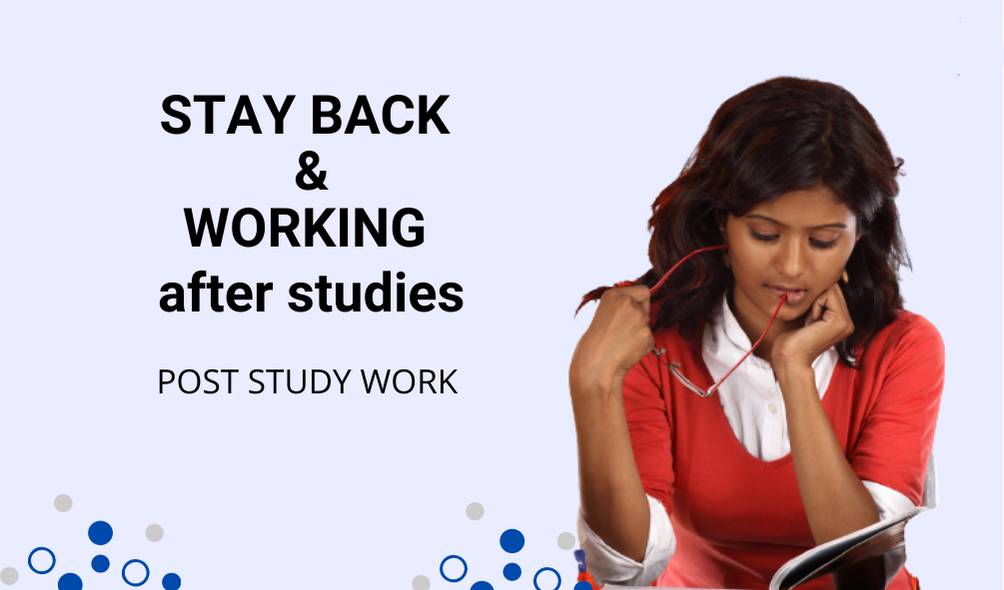Congratulations on completing your higher education in Australia! It’s great to hear that you’re interested in gaining post-study work experience in Australia. Here’s a step-by-step guide on how you can achieve your goal:
Step 1: Understand the Post-Study Work Visa options
The Australian government offers various post-study work visas that allow international students to work in Australia after completing their studies. These visas include:
- Post-Study Work Stream of the Temporary Graduate Visa (subclass 485): This visa allows international students who have completed their studies to work in Australia for up to 2-4 years, depending on the level of their qualification. To be eligible, you must have completed a degree or higher qualification from an Australian institution, and meet other requirements such as English proficiency and health insurance.
- After covid 19 pandemic, Australia started renewing 485 visas for all the students who have studied in Australia. From 1 July 2023, international higher education graduates with eligible qualifications will be granted an extra two years of post-study work rights. The allowable work hours cap for international students will be increased from 40 hours to 48 hours per fortnight.
- The extension is in addition to the existing additional one to two years of work rights for eligible students who study, live, and work in regional areas. Click on the below link to find out if you are eligible to get the additional 485 extensions: click here
- Eligibility for all those international students whose TGV will expire between 1 September 2022 and 1 July 2023, as well as TGV holders who remained in Australia contributing to the economy during the COVID-19 pandemic, will be able to access a two-year Pandemic event (subclass 408
- working hour cap for international students is changing from 1 July 2023, The cap will be raised from 40 hours to 48 hours per fortnight.
Other Pathways students can also apply after completion of their studies they are:
- Skilled Work Regional (Provisional) visa (subclass 491): This visa allows skilled workers to live and work in regional Australia for up to 5 years. To be eligible, you must be sponsored by a state or territory government or eligible relative, and meet other requirements such as age, English proficiency, and work experience.
- Skilled Independent visa (subclass 189): This visa allows skilled workers to live and work in Australia permanently without the need for sponsorship. To be eligible, you must have a skilled occupation on the Medium and Long-term Strategic Skills List (MLTSSL), and meet other requirements such as age, English proficiency, and work experience.
Step 2: Check your eligibility
The first step is to ensure that you are eligible to apply for a post-study work visa. To be eligible, you must have completed a degree or diploma from a recognized Australian educational institution for a degree that is reflection in the MLTSSL occupation list. The visa requirements also include age, English language proficiency, health, and character checks. You can check your eligibility by visiting the Department of Home Affairs website.
Step 3: Apply for a post-study work visa
Once you have checked your eligibility, you can apply for a post-study work visa. You must apply within six months of completing your studies, and you can apply online. The visa is valid for two to four years, depending on your qualification. Make sure to provide all the necessary documents, including your passport, academic transcripts, and English language test results.
Step 4: Search for job opportunities
While waiting for your visa to be approved, start searching for job opportunities. Look for job openings in your field of study and apply for positions that match your skills and experience. You can search for job opportunities on job search websites, company websites, and social media platforms like LinkedIn.
Step 5: Attend job fairs and networking events
Attending job fairs and networking events can also help you find job opportunities. These events are an excellent way to meet potential employers and learn about job openings in your field. You can also network with professionals in your industry and learn about the job market in Australia.
Step 6: Prepare your resume and cover letter
Once you find a job opening that matches your skills and experience, prepare your resume and cover letter. Make sure your resume highlights your education, work experience, and skills. Your cover letter should be tailored to the job opening and explain why you are the best candidate for the position.
Step 7: Prepare the necessary documents
To apply for the Temporary Graduate Visa, you need to prepare the necessary documents. These include:
- A valid passport
- Proof of your English language proficiency
- Confirmation of Enrolment (COE) or a letter from your education provider stating that you have completed your course
- Academic transcripts and certificates
- Proof of your health insurance
- A police clearance certificate
Step 8: Lodge your application
Once you have prepared all the necessary documents, you can lodge your application for the Temporary Graduate Visa online through the Department of Home Affairs website. You will need to pay the visa application fee, which varies depending on the type of visa and your location.
Step 9: Wait for the outcome of your visa application
After you have lodged your application, you will need to wait for the outcome. The processing time for the Temporary Graduate Visa varies depending on your location and the time of the year. You can check the current processing times on the Department of Home Affairs website.
Step 10: Attend interviews
If your resume and cover letter are successful, you will be invited to attend an interview. Make sure to prepare for the interview by researching the company and practicing your interview skills. Dress professionally and bring a copy of your resume and cover letter with you. Use professional services to prepare your curriculum vitae and see that you explain clearly your bachelor’s and master’s projects and what you have learned in those projects. Give local references in the resume to get the interviewer to know more about you.
Step 11: Accept a job offer
If you are successful in the interview, you will be offered a job. Make sure to read the job offer carefully and negotiate your salary and benefits if necessary. Once you have accepted the job offer, you can start working in Australia and gaining valuable post-study work experience.
Conclusion
Getting an on-shore post-study work experience in Australia requires preparation, hard work, and dedication. By following these steps, you can increase your chances of finding a job and gaining valuable work experience after completing your education in Australia. Good luck!
Case Study
Meet Sarah, a student from India who has completed her master’s qualification in Australia. She wants to gain work experience in Australia after completing her studies. Here’s how Sarah can use the step-by-step guide to get an on-shore post-study work experience in Australia. You can also reach us to understand how to plan your application after the completion of your studies.
Step 1: Understand the Post-Study Work Visa options
Sarah needs to understand the different types of post-study work visas available in Australia. There are two main types of post-study work visas – Graduate Work visas and Post-Study Work visas. The Graduate Work visa is for international students who have completed a course in Australia that is relevant to an occupation on the Skilled Occupation List. The Post-Study Work visa, on the other hand, is for international students who have completed a bachelor’s degree or higher qualification from an Australian institution. Sarah needs to determine which visa option is suitable for her.
Step 2: Check your eligibility
Sarah needs to check whether she is eligible for a post-study work visa. To be eligible for a post-study work visa, Sarah must have completed a course in Australia from a registered institution, meet the English language requirements, and satisfy the Australian study requirement.
Step 3: Apply for a post-study work visa
Once Sarah has determined which post-study work visa option is suitable for her and checked her eligibility, she can proceed to apply for the visa. Sarah needs to prepare the necessary documents and lodge her application online.
Step 4: Search for job opportunities
While Sarah’s post-study work visa application is being processed, she can start searching for job opportunities in her field of study. Sarah can use job search websites such as Seek, Indeed, or LinkedIn to find job openings.
Step 5: Attend job fairs and networking events
Sarah can attend job fairs and networking events to meet potential employers and learn about job opportunities. She can also join professional associations related to her field of study to expand her network.
Step 6: Prepare your resume and cover letter
Sarah needs to prepare her resume and cover letter tailored to the job she is applying for. She needs to highlight her skills, qualifications, and work experience to make her application stand out.
Step 7: Prepare the necessary documents
Once Sarah has secured a job offer, she needs to prepare the necessary documents for her Visa Application as listed above.
Step 8: Lodge your application
Sarah needs to lodge her post-study work visa application as soon as possible after receiving a job offer. She needs to provide the necessary documents to support her application.
Step 9: Wait for the outcome of your visa application
Sarah needs to wait for the outcome of her post-study work visa application. The processing time for post-study work visas can vary, but it usually takes around two to four months.
Step 10: Attend interviews
Once Sarah’s visa application is approved, she needs to attend interviews with her potential employer. She needs to prepare for the interview by researching the company, practicing interview questions, and dressing appropriately.
Step 11: Accept a job offer
After attending interviews, Sarah can accept a job offer from her potential employer. She needs to sign her employment contract and start working to gain valuable work experience in Australia.
Conclusion:
By following these steps, Sarah can increase her chances of getting an on-shore post-study work experience in Australia. It’s important to prepare well, be persistent, and keep an open mind to job opportunities in different regions or industries. With dedication and hard work, Sarah can gain valuable work experience and achieve her career goals in Australia.

